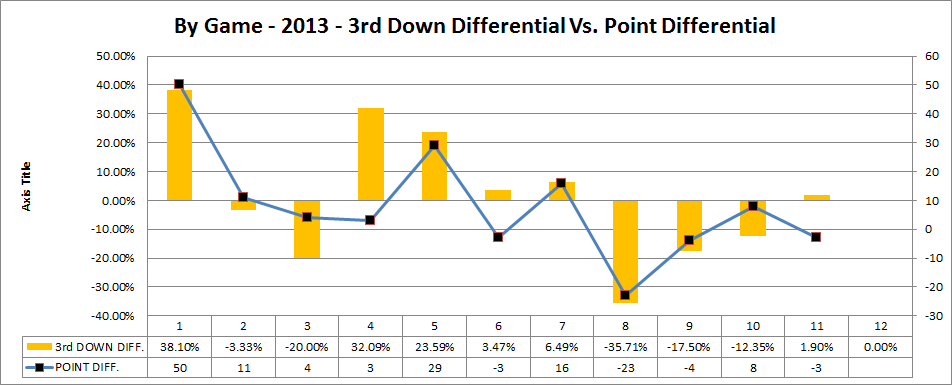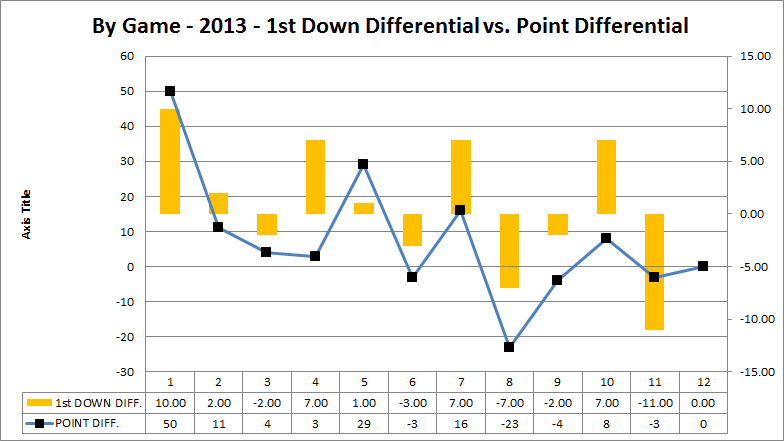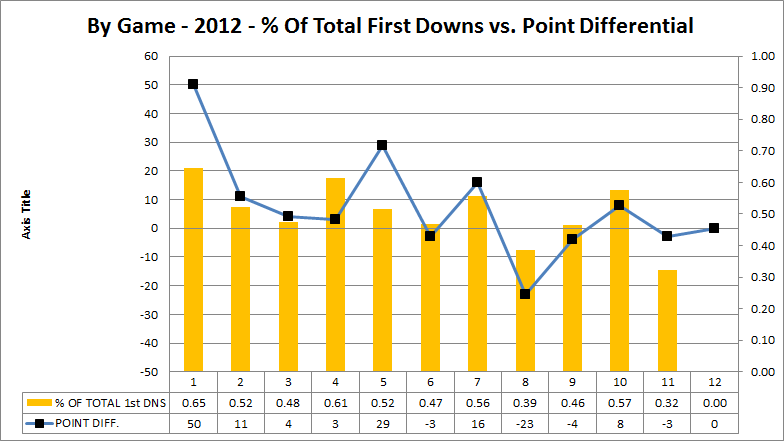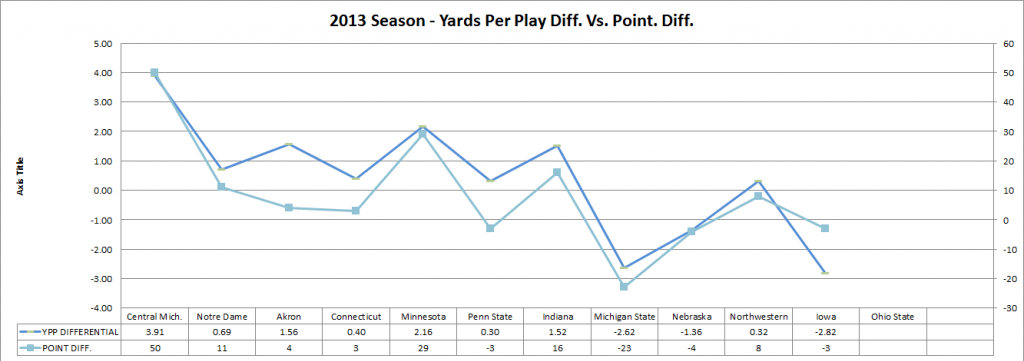Revisiting Downs, Differentials And Yards Per Play
Although some people might have the statistics of this season farthest from their mind right now, they are worth visiting all the same. We have discussed it several times on the blog, but one of the more telling indicators of overall success seems to be winning the battle of downs, and indeed, it is something Michigan has not been all that great at doing this year.
Some interesting notes regarding previous seasons –
In 2012, we averaged a positive 3rddown differential of 16.90% and managed to capture about 52% of the total first downs earned in a game (about 1 more first down per game), as well as an average margin of victory of 10 points. That, of course, resulted in a record of 8-5.
In 2011, our 11-2 record came on the heels of an average margin of victory of 16.92 points combined with a positive 3rddown differential of 10.43% and an average of 56% of the total first downs (almost 5 more per game than our opponent).
Actually, here is some historic data just on third down differentials:
|
SEASON |
GAMES WITH NEGATIVE 3rd DOWN DIFF. |
GAMES WITH NEGATIVE POINT DIFF. (LOSSES) |
|
2005 |
4 |
5 |
|
2006 |
4 |
2 |
|
2007 |
5 |
4 |
|
2008 |
10 |
9 |
|
2009 |
6 |
7 |
|
2010 |
7 |
6 |
|
2011 |
5 |
2 |
|
2012 |
3 |
5 |
|
2013 |
5 |
4 |
Granted, these are averages and it is a small sample, but the R-value here is 0.734, which is enough to say that the two numbers are indeed related. Indeed, for just the 2013 season numbers, the R-value for 3rddown differential versus scoring margin is 0.758. That is a slight uptick from previous seasons – our fate in games this year is more closely tied to this statistic than has been typical. Interestingly, going back to last season anyway, the R-value for first down differential versus scoring margin has remained more or less constant in the 0.691 to 0.692 range.
What does 2013 look like right now?
As you are well-aware, no doubt, our current record is 7-4. Our average 3rddown differential is 1.52% and we average about 50% of the first downs in a game (0.82 more per game than our opponent). The average margin of victory is 8 points.
Third down differentials vs. scoring margin:
First down differentials vs. scoring margin:
% Of Total First Downs vs. scoring margin:
We should also take a look at yards per play versus scoring margin as well, since this is an even better indicator of overall success. Indeed, the R-value for this year’s results to date is 0.882, so it is a particularly good metric on which to evaluate things this year. Overall, Michigan has averaged 5.26 yards per offensive snap this year to date against a differential of 0.37, so in essence, we are close to giving up pretty much what we gain on the field. Obviously, this is not a good place to be.
What was it like in previous years?
In 2011, the average yards per offensive snap was 6.29 yards against a differential of 1.11, and in 2012, it was nearly steady with an average of 6.11 yards per play against a differential of 1.17. Before anyone say anything, yards per play allowed is actually slightly better this year over last year – 4.94 in 2012 to 4.89 now. That is markedly better than 2011, in which we gave up an average of 5.18 yards per play. The tempo-free stats bear out what you already knew – the defense does a pretty good job overall.
The current yards per play picture (click on photo to go to full size image):
November 26th, 2013 at 11:26 PM ^
...you'll likely find these also correlated with wins (and with each other):
- first down differential
- 3rd down coversion % diff. (shown above)
- passer efficiency
- yards per carry
- turnover margin
- yardage differential
Looking at all of those together, one can come to the conclusion that teams that can better and more consistently move the ball down the field will win more often. Orly?
Seriously, though, I've always believed that being a championship offense is about being able to run and throw so that the defense has to account for both, then attack the opposite of what they're trying to take away on each play; i.e., take what the defense gives you. This requires a system where the QB can check to a run, pass, draw, or screen. I've also always believed that being a championship defense is about never being outflanked, all 11 players reading their keys correctly on every snap, having all 11 players be at least a B player, and pursuit, pursuit, pursuit.
Only being as strong as your weakest link is much more true on defense than offense, unless the worst offensive player is the QB.





Comments